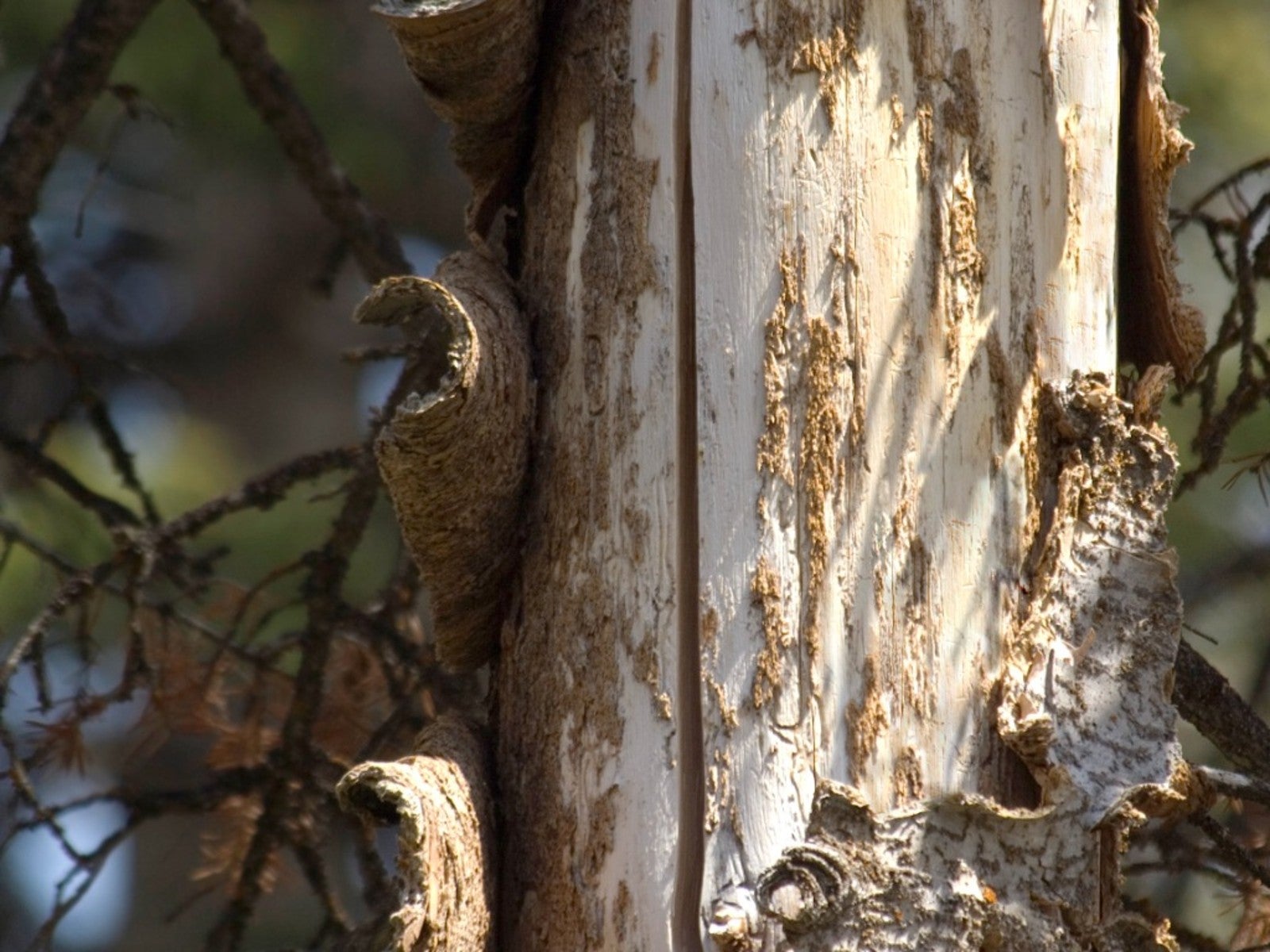What Is Frost Crack: What To Do For Cracking Tree Trunks


During periods of cold winter nights followed by warm sunny days, you may discover frost cracks in trees. They can be several feet (1 m.) long and a few inches (8 cm.) wide, and the colder the temperature, the wider the cracks. Frost cracks usually occur on the south to southwest side of the tree.
What is Frost Crack?
The term “frost crack” describes vertical cracks in trees caused by alternating freezing and thawing temperatures. When the bark alternately contracts with freezing temperatures and expands on warm days, a crack is likely to occur. A tree with a crack is in no immediate danger and may live for several years.
Reasons for Frost Crack in Trees
Frost is just one of the causes of tree bark cracking. You'll also see cracking tree trunks from a condition called sunscald. In late winter or early spring, the warm afternoon sun shining on the trunk can cause the tree tissue to break dormancy. When sunny afternoons are followed by freezing nights, the tissue dies. You may find strips of bark peeling off the tree. Dark-colored and smooth-barked trees are most susceptible to sunscald.
Cracking tree trunks also occur in trees grown in areas where they are marginally hardy. Hardiness zones reflect the lowest expected temperature in an area, but all areas experience unexpectedly low temperatures from time to time, and these low temperatures can damage trees growing on the edges of their hardiness zones.
How to Fix Frost Crack
If you're wondering how to fix a frost crack, the answer is that you don't. Sealants, wound paint, and adhesives have no effect on the healing process or the health of the tree. Keep the crack clean to prevent infection and leave it open. In many cases, the tree will attempt to heal itself by forming a callus along the crack.
Once a crack occurs, it is very likely that another crack will form in the same location. You can help prevent a re-occurrence by wrapping the trunk of the tree in tree wrap for the winter. Remove the wrap as soon as temperatures warm in late winter or spring. Leaving the wrap on too long provides a secure hiding place for insects and disease organisms.
Another way to protect the tree is to plant evergreen shrubs around the trunk. Shrubs can insulate the trunk from extremes in temperatures and shield it from direct afternoon sunlight. You should prune the canopy of surrounding trees conservatively to avoid removing branches that shade the trunk.
Gardening tips, videos, info and more delivered right to your inbox!
Sign up for the Gardening Know How newsletter today and receive a free copy of our e-book "How to Grow Delicious Tomatoes".

Jackie Carroll has written over 500 articles for Gardening Know How on a wide range of topics.
-
 4 Superfast Composting Methods: Turn Waste Into Garden Gold In 30 Days Or Less
4 Superfast Composting Methods: Turn Waste Into Garden Gold In 30 Days Or LessTry the fastest composting methods to turbocharge your pile and transform kitchen scraps and garden waste into finished compost in just a few weeks.
By Mary Ellen Ellis
-
 Best Spider Plant Soil – Complete Soil Guide And Expert Tips For Keeping Plants Happy
Best Spider Plant Soil – Complete Soil Guide And Expert Tips For Keeping Plants HappySpider plants are fun and easy plants to grow, but what is the best soil for a spider plant? Selecting the right soil is important so they can thrive.
By Bonnie L. Grant
-
 Best Trees For Carbon Sequestration And Climate Change
Best Trees For Carbon Sequestration And Climate ChangeLet’s keep planting trees. They are our best bet for capturing carbon and may help with our global warming issues.
By Teo Spengler
-
 7 Invasive Trees You Should Never Plant In Your Yard Or Garden
7 Invasive Trees You Should Never Plant In Your Yard Or GardenWhat are some invasive trees you should never plant in your yard? Click here to find out.
By Teo Spengler
-
 How Close Can You Plant A Tree To A Stump?
How Close Can You Plant A Tree To A Stump?Looking to plant new trees near old stumps or where stumps have been removed? Click here to learn how.
By Teo Spengler
-
 Messiest Trees That Drop Debris Everywhere
Messiest Trees That Drop Debris EverywhereWant to know which trees will create the biggest messes in your home landscape? Click here to find out.
By Amy Grant
-
 How To Get Rid Of Tree Sprouts In The Yard From Nearby Trees
How To Get Rid Of Tree Sprouts In The Yard From Nearby TreesLearn the simple way to keep pesky tree seedlings in your lawn from becoming saplings.
By Teo Spengler
-
 How To Tell How Old A Tree Is
How To Tell How Old A Tree IsEver wondered how to calculate the age of a tree? Click here to learn all about it.
By Teo Spengler
-
 When To Remove Tree Stakes From Saplings
When To Remove Tree Stakes From SaplingsA newly planted tree may grow strong when it’s staked, but don’t forget to remove the stakes when it’s stable.
By Teo Spengler
-
 Inosculation And Trees Growing Together
Inosculation And Trees Growing TogetherIf you ever see two trees that have bonded and grown together, read here to learn why and how it happens.
By Teo Spengler